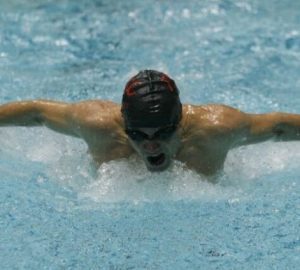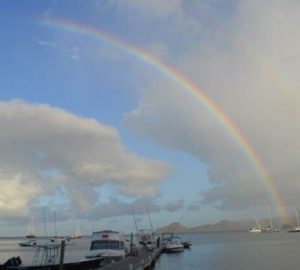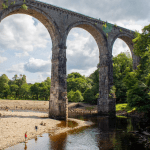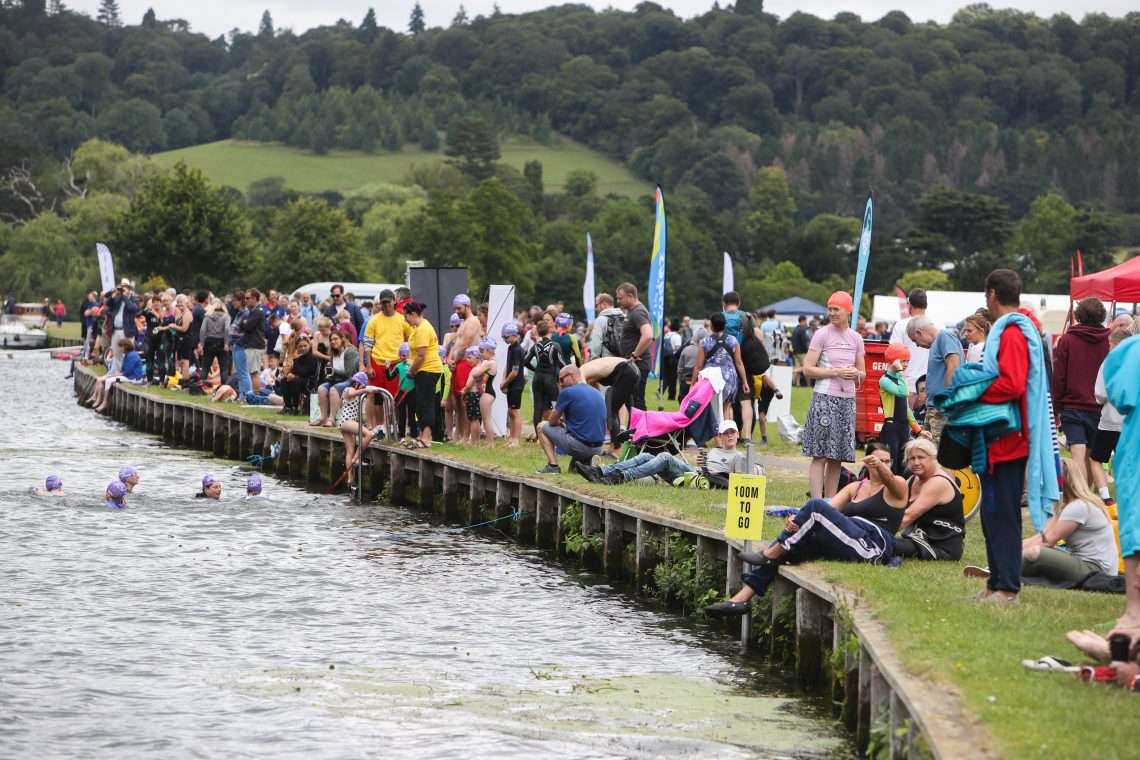
Covid-safe open water swimming in Spain
Karen Parnell lives in Southern Spain, runs swimming and triathlon camps there. Here she shares her top tips for staying safe if you travel to Spain and decide to swim, including how to navigate Spain’s covid-19 rules.
Sea Swimming
Sea swimming for me is the best way to enjoy Spain as you can enjoy a swim and then go to a beach side Chiringuito for a healthy (or not so healthy) breakfast and perfectly served hot coffee.
The beaches are now fully open to enjoy swimming, paddle boarding, kayaking and much more. Here are my top tips for enjoying a safe, refreshing sea swim.
Covid-specific advice
- Make sure you know the beach rules with respect to social distancing as some beaches may require a marked-out area with little flags for you to sit in or sunbath in. There will be beach monitors to ensure you are socially distanced (1.5m) and wearing a face covering when moving around. (You can take your face covering off while sunbathing or swimming)
- After your swim, if you retire to a beach bar or Chiringuito for a coffee or a cold beer, make sure you wear your mask to the bar and use the provided hand sanitiser when entering. You won’t need to use your mask when you are seated but if you go to the toilet or leave the table you will need to wear a mask. When queuing, make sure you keep 1.5m distance.
General sea swimming safety advice
- Look for beaches with lifeguard stations and make sure they are manned. It’s worth noting that lifeguards will not be giving mouth to mouth resuscitation this summer and will be limited to chest compressions due to Covid-19 risks.
- Stay inside of the yellow buoys to avoid boats, jet skis etc.
- Do your homework before you go. Seek out local recommendations of where to swim see if there is a Facebook group local to where you are swimming. E.g. The Swim Spain Facebook group.
- Make sure you are not swimming where boats, kayaks, jet skis or paddle boards enter the water. These places are sometimes marked with a red buoy or a string of yellow buoys from the shore out to sea in a line.
- Wear a tow float and never swim alone.
Try to find a blue flag awarded beach. The Blue Flag System is a way of monitoring and signalling the best beaches in Europe and South Africa. The system is independently operated by the Foundation for Environmental Education. The blue flag is awarded to beaches that meet the Foundation’s high standard which are measured across 4 categories:
- The quality of the water
- The level of local environmental education and information on display
- The standard of the local environmental management
- Safety services available
Lakes & Reservoirs
If you do venture inland to the lakes and reservoirs check before hand if you are allowed to swim there. Once you arrive look for a visitor or tourist office board for local rules and to check whether it is safe to swim. Many reservoirs have great open-air picnic areas with benches and tables free to use so maybe take a picnic with you to enjoy the natural parks after your swim for a great day out.
Covid-specific advice
- Remember that rules for using face masks in Spain are stricter, and more strictly enforced, than in England. If you’re walking anywhere outside, you need to wear a mask. If you’re driving with someone who is not from your household, you need to wear a mask.
- Bring and use hand sanitiser before and after swimming and before entering any public spaces such as bars or restaurants.
- Check for any local covid related regulations or restrictions
General inland swimming safety advice
- Again, use a tow float and brightly coloured hat.
- If you use a wetsuit, make sure it is fully cleaned before and after your swim to stop the spread of freshwater mussels from reservoir to reservoir which is an increasing problem in Spain.
- Be aware if there are kayaks, paddle boards, boats, fishermen or wind surfers in the area.
- You may wish to wear light weight swimming shoes to avoid hurting your feet on rocks.
Always do your homework before you plan to swim in the sea or lakes in Spain as conditions do change.
Suggested Packing list:
- Face covering/mask and hand sanitiser
- Tow float
- Good quality pair of googles and anti-fog treatment (I recommend Cressi , which is by far the best product I have used to keep my goggle clear when sea or lake swimming)
- Wetsuit (if you use one) and anti-chafe balm
- Brightly coloured swimming hat and a pair of flip-flops
- Towel, sunscreen, drinking water
- Mobile phone with 112 in dialling list (this is the number for emergency services in Spain and the EU)
- It’s a good idea to have an ID bracelet with any allergies & medication etched in e.g. ICE ID
- First aid kit with plasters, Germolene and Anthisan for bites and stings
- Up to date EHIC card and travel insurance
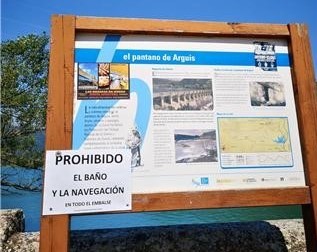
Sign at the Arguis reservoir forbidding swimming and boats/kayaks during the pandemic – look for a sign like this before you attempt to swim in Spain.
About Karen
Karen Parnell is an ASA Open Water Swimming Coach, IRONMAN® Certified Coach and British Triathlon Federation (BTF) Level 3 High Performing Coach and Tutor. She is also a qualified Personal Trainer. Karen is based near Malaga in Southern Spain where she runs ChiliTri coaching and camps. www.chilitri.com
Useful links:
https://www.facebook.com/groups/swimspain/
https://en.wikipedia.org/wiki/List_of_dams_and_reservoirs_in_Spain
If you like Apps then it’s worth downloading the Eltiempo.es App which shows local beach weather, weather warnings, sea temperature and sea conditions.





